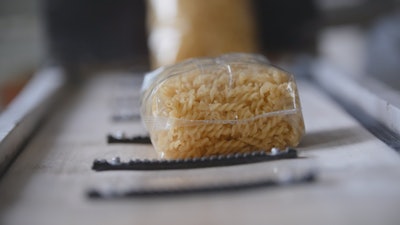
Distribution of the Coronavirus disease (COVID-19) vaccine has highlighted the importance of efficient packaging technology, especially where cold chain logistics are involved. The high demand for these vaccines has brought unique challenges for packaging experts, from sand and glass shortages to the need for cold chain-appropriate packaging. These hurdles have put packaging technology to the test but have also spurred the development of efficiencies and advances that will continue to impact the packaging industry for a long time to come.
The role of packaging in reducing waste
Packaging experts have played a key role in making the COVID-19 vaccine accessible around the world, and have faced many challenges throughout the process. Many vaccine doses must be stored at varying below freezing temperatures, requiring different types of storage packaging for the vaccines. From the time they are manufactured to when they are administered, they must be able to withstand those temperatures while protecting the drugs inside. While thousands of vaccine doses have gone to waste throughout the process, perfecting the packaging of vaccine doses has helped improve outcomes and ensure vaccine safety and efficacy throughout the process.
Packaging plays an equally important role in the food industry as it protects food products, which is essential in preventing spoilage and reducing waste. Between 30-40% of the U.S. food supply goes to waste every year, and the USDA Economic Research Service estimates that nearly 40% of this loss occurs in the supply chain, and packaging plays a role in some of this loss.
At every stage of the supply chain after a food product is processed or harvested, issues like damaged or improper packaging contribute to food waste. Applying packaging best practices developed during vaccine distribution can help ensure appropriate packaging that keeps products fresh and care instructions clear. This requires good information technology such as with an enterprise resource planning (ERP) system to properly trace and track the movement of product throughout the supply chain by recording the specifics of the shipment through barcode scanning, labeling and/or radio-frequency identification (RFID) tags.
Innovations in packaging
A product’s packaging directly impacts supply chain considerations: The right packaging and shipping containers can preserve food quality while offering convenience to consumers. Throughout the pandemic, packaging experts have modernized their practices for creating efficient packaging for vaccine distribution. Here are a few insights that can be applied to food packaging, too.
Cold chain packaging improvements. During the vaccine distribution process, a major glass shortage forced packaging companies to create dynamic materials that could withstand freezing temperatures throughout the cold chain.
Packaging experts also constructed functional packaging that allowed air flow to vaccine doses to maintain certain temperatures, which is equally important in the distribution of food. Products stored on tertiary packaging like pallets help air reach products, reducing bacteria growth and keeping food fresher for longer.
Importance of nanotechnology. Scientists who explored using antimicrobial nanomaterials to reduce the spread of COVID-19 are shining a spotlight on the use of nanotechnology in textiles, sanitizers and coatings, and the food packaging industry should take note. While nanomaterials are already being used at multiple stages of the packaging supply chain, their use during the pandemic has shown the possibilities for integrating them even more closely into the food supply chain.
Nanomaterials in antibacterial packaging, barrier films and coatings, temperature-controlled packaging and food sensors act as a barrier to moisture and gases while offering UV protection. Enhancing packaging with nanomaterials helps extend product shelf life, adds security to the packaging, improves the strength and flexibility of the packaging, and in many instances, speeds up biodegradability. Its use will help reduce food waste and ensure product safety and traceability in the supply chain.
Advanced monitoring. Advances in tracking technology have allowed for easier and more accessible traceability for both food and vaccine distribution, helping reduce contamination and spoilage by identifying risks before faulty products arrive at their end market.
Technology such as RFID transmitters can be embedded in packaging to track a product throughout the supply chain, from its manufacture or grow date to its arrival at a final location. Increasingly accurate sensors that provide real-time data are shaping more reliable traceability and optimizing operations, which is just as important in vaccine distribution as it is in the food industry. The integration of cold chain monitoring technology into packaging is improving, and ensures products maintain certain temperatures and stay fresh. As 5G and Internet of Things (IoT) technology progresses, this will only make it easier to track in the cold chain.
More functional labels. Labeling is just as important as the packaging itself because it serves as an interface between brands and consumers. Labeling provide essential information like expiration dates and agricultural information or manufacturing locations, and tracking technology makes this information more accessible so consumers know exactly what they are getting.
Perhaps inspired by or seeing the success of instructions on vaccine packaging, many restaurants that offered carry-out during the pandemic have started putting detailed care instructions on their labels. Labels with information like how long food can sit out or how long it is safe to eat after being refrigerated help prevent spoilage and reduce waste.
Advancements in packaging, tracking technology and cold chain efficiency are all playing a role in streamlining the food and vaccine distribution processes. And, the increase in traceability is allowing for more transparency on products, while helping companies optimize their operations.







![Phononic Intelligent Actively Cooled Tote Freezer[89]](https://img.foodlogistics.com/files/base/acbm/fl/image/2021/09/Phononic_Intelligent_Actively_Cooled_Tote_freezer_89_.614a929dc7901.png?auto=format%2Ccompress&fit=crop&h=167&q=70&w=250)










